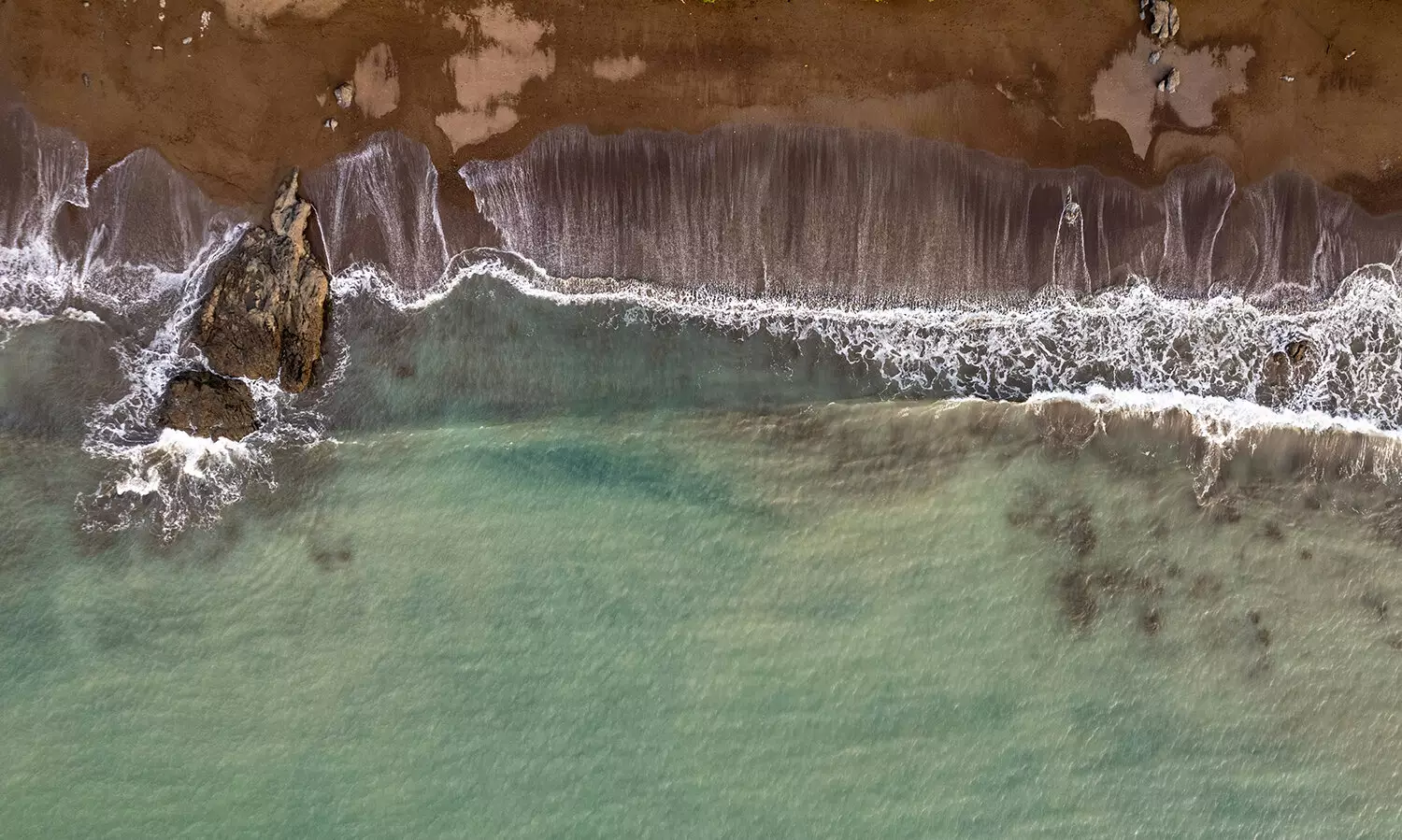The Earth’s geologic history is punctuated by dramatic shifts in climate, with many of these changes having profound consequences on sedimentary processes. Among the most significant transitions was the Eocene-Oligocene boundary, approximately 34 million years ago, a period marked by drastic cooling and a pronounced drop in global sea levels. Conventional wisdom held that such dramatic alterations would result in widespread erosion across continents, leading to substantial deposits of sediment in the ocean. However, a groundbreaking review by researchers at Stanford University has uncovered a surprising absence of sediment from this critical time in the geologic record, prompting a reevaluation of our understanding of sediment dynamics and environmental resilience.
In a recent publication in Earth-Science Reviews, the findings of this Stanford review challenge established sedimentological models, revealing a notable dearth of sandy deposits along the continental margins of all seven continents for the period corresponding to the pronounced climatic shifts. The senior author of the study, Stephan Graham, highlighted the perplexing nature of this discovery, questioning, “Where did all the sediment go?” Such unprecedented geological gaps not only challenge our previous assumptions about sediment availability during major climate transitions but also offer critical insights into the mechanisms driving sediment movement and deposition on a global scale.
The Eocene period, which spanned from approximately 56 million to 34 million years ago, experienced some of the Earth’s highest temperatures and sea levels—conditions vastly different from the Ice Age environments that would follow. The emergence of vast ice sheets in Antarctica, alongside global temperature drops, catalyzed a series of cascading effects on both marine and terrestrial ecosystems. As the planet transitioned into the Oligocene, significant die-offs in both land and marine species occurred, raising questions about the effects of such drastic environmental changes on sedimentary processes.
This new study underscores the importance of understanding early Eocene conditions as a reference point for comprehending the shift to an icehouse climate. More specifically, the researchers posited that early Eocene conditions facilitated robust sedimentary processes, leading to rich sand deposits in ocean basins, which starkly contrasts with the situation 34 million years ago.
The research team, led by Zack Burton, undertook an exhaustive review of decades’ worth of geological literature that spanned various studies and data sources, including offshore oil drilling analyses and seismic survey interpretations. By synthesizing findings from over a hundred global sites, the authors sought to paint a more comprehensive picture of sediment dynamics during this pivotal climate transition. Though this approach of scrutinizing historical literature isn’t novel, the scale and rigor of the current analysis illuminate significant gaps previously overlooked by the scientific community.
“This method can yield exciting and unexpected findings,” noted Burton, emphasizing the exploratory nature of their research. As they delved into the data, the researchers were astonished by persistent erosional unconformities, or gaps in the geological record, suggesting that instead of sediment accumulation, the cooling climate might have heralded a new era of erosion.
The researchers proposed several theories concerning the lack of sediment deposition. One compelling possibility is the presence of powerful ocean currents, triggered by drastic changes in water temperature and salinity. These currents may have played a crucial role in eroding the seabed and sweeping away sediments that would have otherwise accumulated in coastal areas.
Another aspect worth considering is the role of changing sea levels. The fall in sea level could have exposed continental shelves, allowing sediments to bypass nearer sedimentary basins and funnel deposits far into the abyssal plains of the ocean. Additionally, localized phenomena such as glacial erosion in Antarctica may have compounded these effects, leading to widespread erosion across multiple oceanic basins.
The researchers argue that the universal patterns of erosion observed across oceanic basins during this period may serve as a cautionary analogy for the rapid changes induced by current human activity. While the Eocene-Oligocene transition may have appeared gradual in a geological time scale, today’s climate change operates at a breakneck pace, far surpassing past transitions in speed. This insight is vital for understanding how contemporary climate shifts influence sedimentary processes and inform predictions regarding future environmental outcomes.
Graham summarized the study’s implications, cautioning that the dynamics observed during the Eocene-Oligocene transition highlight the significant changes that can take place in response to rapid climatic fluctuations. This understanding is crucial, for it underscores the potential for drastic transformations in Earth’s surface and sedimentary systems as global temperatures continue to rise. By analyzing the sedimentary patterns of the past, scientists can better prepare for the challenges posed by the unfolding climate crisis today.

